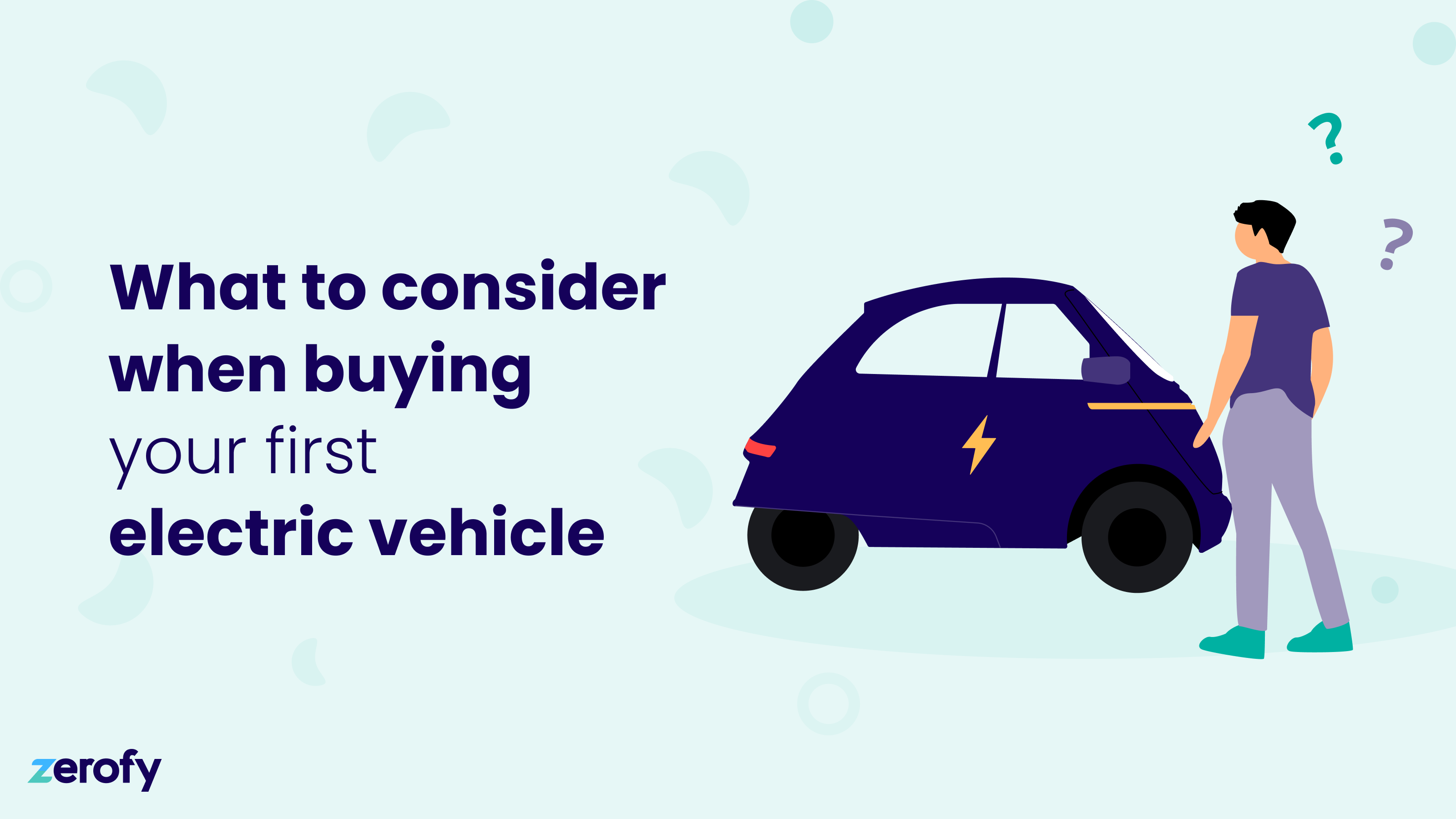
It’s no secret that the growth of electric vehicles has greatly accelerated in recent years. Advancements in EV technology, government policies, and increased public awareness of the need to electrify transportation have all contributed to the growing market. The year 2022 saw the global electric car stock surpass the 10 million mark, a 43% increase from 2019, and representing a 1% stock share (Source). In the US, EV sales reached a new record of over 400,000 units sold in 2020, representing a 4% share of total new car sales (Source).
It’s clear many people are either buying EVs, or at least curious about purchasing one as their next vehicle. But for many, buying a first EV comes with questions and considerations they may not have encountered when purchasing an internal combustion engine vehicle. Below, we’ve included some of the key factors you’ll want to consider when exploring this exciting and low-carbon transportation purchase.
1. The range of the model you’re interested in
One of the most important factors to consider when purchasing an EV is the driving range. The range of an EV refers to how far it can travel on a single charge. For example, if you tend to drive long distances for work on a weekly basis, you may require a higher range than someone who will solely be using their vehicle for errands in the city. Typically, electric vehicles offer a minimum of 200 miles of driving range for every charge. Some Tesla models have a 300-mile-plus range, like the Tesla Model 3 sedan and Tesla Model Y (Source). Take a browse through Zerofy’s EV database to explore different models and their ranges.
Read more: understanding electric vehicles and range in winter
2. Understand different charging options
There isn’t just one type of charger for EVs. They can be charged with three different kinds of chargers—Level 1, Level 2, and Level 3—with different rates of charge times. Level 1, or house current, could take as long as 24-hours to charge your vehicle, while level 2 charging can typically charge your vehicle overnight. Level 3 chargers are also commonly known as DC fast chargers, and depending on the EV, can recharge their batteries up to 80% in 30 minutes. It is important to note when considering which EV to buy that not all EVs have the capability to receive high output from Level 3/DC fast chargers (Source). If you install a wallbox EV charger at home, you’ll be able to take advantage of charging when electricity from the grid is the most green and inexpensive.
Read more: how to choose a wallbox EV charger for your home
3. Charging infrastructure
If you don’t have access to a charging station at home, or won’t have one for a little while, you may need to rely on public charging stations, which can add time and inconvenience to your charging routine. Check for public charging stations near your home, work, and other destinations you frequently visit. There are many good resources you can use to determine the infrastructure available in your area. In the US, the Department of Energy maps all alternative fuel charging stations in the US and Canada. There are also websites like PlugShare and ChargeHub that offer a similar free service. And A Better Route Planner offers a great app for routing and navigation including planning charging stops.
4. Cost
The cost of an EV can vary greatly depending on the make and model. While EVs can be more expensive to purchase than internal combustion engine vehicles, there are a number of incentives and tax credits available that can help offset the cost. When considering the cost factors of buying an EV, ensure you are aware of all of the credits and incentives available in your region. When it comes to the ongoing operating costs of your EV, you will want to factor in the total cost of ownership, including maintenance, the electricity used in charging, and home charging infrastructure you may get installed, like a wallbox EV charger.
5. Maintenance
EVs generally require less maintenance than internal combustion engine vehicles. This is because the battery, electronics, and motor do not need much attention at all, and there are minimal fluids that need to be changed (Source). While maintenance may be less, it’s still important to consider the ongoing maintenance costs your EV will need. You can estimate this by checking the manufacturer’s recommended maintenance schedule and factor in any potential costs for battery replacements or repairs.
6. Recommended Models
Last year we ran a series of posts “EV of the month” covering a wide varietey of interesting electric car models. Maybe you find the right EV for you among them:
- 3 Great & Small EVs of the Month (December 2022)
- Efficiency for the Win: Tesla’s Model Y is our EV of the Month (November 2022)
- Backup power for grid outages! The Ford F150 Lightning is our EV of the month for September 2022
- Battery swapping! The NIO ES8 is our EV of the month for August 2022
- The BMW i3, i4, and iX are our EVs of the month in July 2022
- Our EV of the month in June: Kia EV6
- Our EVs of the month in May: Nissan Leaf & Nissan Ariya
- Mercedes EQS is our EV of the month for April 2022
- The VW ID.Buzz is our EV of the month for March 2022